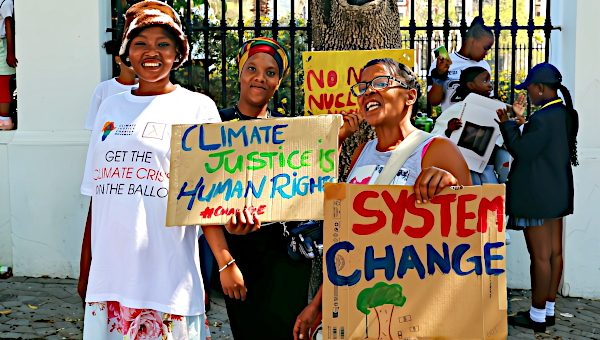Translation of an article from Raah-e Kargar/Workers' Path.
A Concise Look at Current Political and Economic Situation
by: Yousef Langroodi / March 11, 2011
A look at the current conditions in Iran makes it clear that the Islamic Republic continues to face unprecedented economic and political crises. It has not only not been able to take a step toward solving any of the problems it faces but has been spreading and deepening the dimensions of the crises with the policies it has pursued.
The Islamic regime, which in previous months had been using all its capabilities to portray the anti-dictatorial movement as defeated, suddenly -- and with the advent of the protests and demonstrations on February 14 and then 20th and then the Protest Tuesdays that ensued -- saw the reality of people confronting it.
On this year's Char-shanbeh-soori [ceremonies held for the last Wednesday of the year], the Islamic Republic will find out well and truly where it stands, and to what extent it has been able to control people's movement and their struggles. This Char-shanbeh-soori, which is to be held of on the last of the Protest Tuesdays of the current year [Iranian calendar, which ends March 19], will be another occasion for a nationwide opportunity for the people to shout, Death to Dictatro!, and to show this regime of Guardians of Jurisprudence and their planners and functionaries that the Iranian people most definitely wish to overthrow the Islamic Republic. On the eve of a new spring and a New Year and the celebrations for the New Year, people wish to declare the regime as one of the foulest and a thing to be gotten rid of and thrown into history's dustbin.
As well, the political crisis in the most central nuclei of the regime continues; there is not a day that passes that does not witness some conflict between the executive branch, the parliament, the Guardian Council, and the Expediency Council. Dragging the Supreme Leader into political matters, which was used to strengthen Ahmadinejad and his gang, has now become a routine daily occurrence. The elimination of Hashemi-Rafsanjani, who used to be the Number 2 in the line of succession in power, from the chairmanship of Assembly of Experts is one the last and most notable examples of the deepening of the crisis of the Islamic regime. The elimination [from that post] of Rafsanjani, who recently had in any case been sufficiently weakened and was stepping very carefully in the political arena, while giving more cohesion to the most central institutions of regime, at the same time exposes all the more regime's weak points and its [complete] lack of room for flexibility.
In the economic sphere too everything indicates that the economic bankruptcy is still sinking deeper into a crisis. [Mass] unemployment, mass lay offs and successive bankruptcies of productive units and service providers, and the fact of increasing millions of Iranian people falling under the poverty line have all become real threats and predicaments, whose dimensions expand daily. Not even the sudden increase in the price of oil -- due to the recent events in the Middle East/North Africa -- will be able to lend a helping hand to improve the current economic and financial situation for the regime. Due to the old age of [most] refineries and the lack of efficiency of the oil infrastructure and lack of effective investment in that sector, the Islamic Republic is effectively unable to increase production and export of oil products.
Additionally, with pursuing the policy of eliminating price subsidies [for essential goods], the regime has been and is causing increasing poverty and misery amongst a majority of the subjugated people in Iran. The policy of paying out insubstantial cash handouts to compensate for the elimination of the subsidies and to help people with their bills is reaching a dead end, due to the emptying of the country's treasury approaching fast. At the same time, people's grievances due to the sharply increased fuel costs [by 300-400%] as well as those of other necessities are spreading ever wider.
Alongside all these, there have been a number of workers' protests and strikes, including in the oil industry, most of which have been due to non-payment of wages at times going on for months, and these are optimistic signs indicating a counter-offensive against the onslaught by the Islamic Republic and the local capitalists.
We have had many reports of a series of labor actions, such as strikes and gatherings in different cities in Iran, including Abadan, Kermanshah, Rasht, Ahvaz, Isfahan and Shiraz. In two of the most recent labor actions in Iran, 1,800 workers in Tabriz petrochemical plant, in protests against their horrendous economic conditions, went on an 11-day strike. One of the workers' demands is to be contracted officially. The strike did come to an end eventually after the Azerbaijan provincial authorities, as well as the Ministry of Labor and Social Affairs, accepted the workers' demands. Also, hundreds of textile workers in [the northern province of] Mazandaran, gathered in protest against not-receipt of due compensation and against work conditions, carrying placards in front of Qha'em-shahr provincial offices.
Based on all the above, Islamic Republic's current situation is politically and economically very fragile, and far more vulnerable compared to the past. If we add all the above to the international sanctions against the regime, it becomes clear that with the onset of the workers' actions and struggles taking on a nationwide character and joining up with the [general] anti-dictatorial movement of the Iranian people, the Islamic Republic does not have much of a chance for survival.
Internet blackout in Iran as protests over economy intensify across the
country
-
Unrest spreads to more cities after call by country’s exiled crown prince
for mass demonstrations







No comments:
Post a Comment